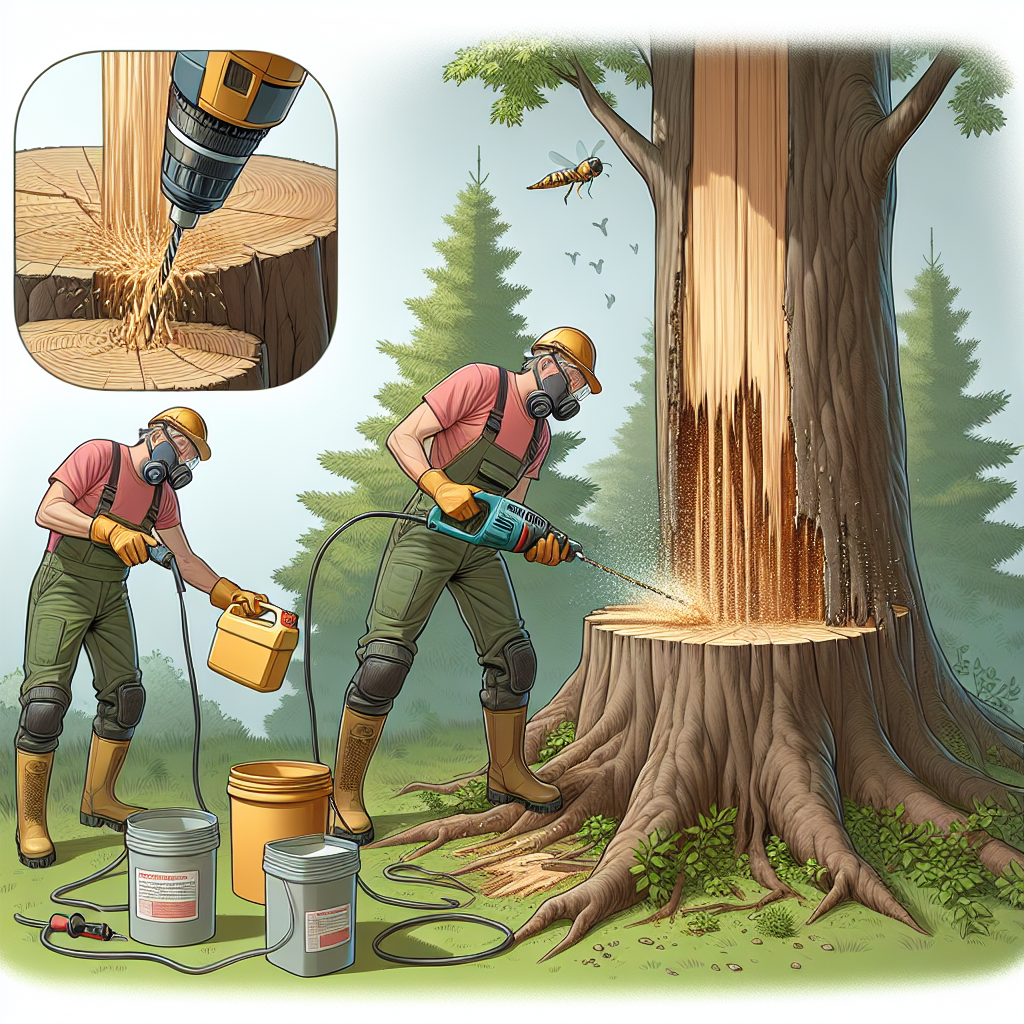
How to poison a tree stump
Understanding Tree Stumps: The Problem They Pose
Tree stumps can be quite a nuisance in your garden or yard. They may not only be an eyesore but also occupy precious space that could be used for planting new trees, flowers, or even expanding your lawn. After a tree has been cut down, the stump can remain for years, often sprouting new growth or attracting pests. This raises the question: what are the best methods to eliminate tree stumps completely? In this article, we’ll explore one of the more drastic tactics used in stump removal—poisoning.
The Rationale Behind Poisoning a Tree Stump
Removing a tree stump can often require considerable effort and resources, especially if you choose to dig it out or grind it down. In some cases, individuals consider poisoning a tree stump as a viable alternative. This method can slow down or prevent regrowth while also breaking down the stump over time, allowing for easier removal thereafter.
There are several reasons why someone might opt for this method:
- Cost-effective solution compared to professional services.
- Minimal physical effort involved.
- Prevention of stump regrowth and pest attraction.
- Gradual decomposition of the stump, enriching the soil in the long term.
Is Poisoning a Tree Stump Safe?
Before proceeding with this method, it’s vital to consider the safety aspects involved. Most tree stump poisons contain chemicals that can be hazardous to the environment, pets, and human beings. Hence, understanding the potential impacts is crucial:
- **Environmental Hazards:** Certain chemicals can leach into the soil and affect nearby plants.
- **Human Safety:** Protective gear should always be utilized when handling poisons.
- **Pet Safety:** Keep pets away from areas where poison has been applied.
Methods of Poisoning a Tree Stump
If you decide that poisoning a stump is the right option for you, here are several methods to do so. Always remember to follow the safety guidelines provided by the manufacturer of any chemical product you choose to use.
1. Herbicide Use
The most common method for poisoning a tree stump is to use a systemic herbicide. These chemicals destroy the tree’s roots and stunt any potential regrowth. When choosing a herbicide, look for those that contain glyphosate or triclopyr.
- Identify whether the tree stump is still actively growing.
- Cut the stump down to about 6 inches above the ground.
- Apply the herbicide directly to the freshly cut surface: make sure to cover the entire area.
- Wait for a few weeks and check for signs of deterioration.
2. Epsom Salt Technique
Epsom salt is a popular, more organic option that can effectively kill a tree stump over time.
- Drill several holes into the top of the tree stump using a power drill.
- Fill the holes with **Epsom salt**.
- Add water to the holes to activate the salt.
- Cover the stump with a plastic sheet to keep moisture trapped.
- Repeated applications may be necessary for effective results.
3. Vinegar Solution
Household vinegar can also act as a natural herbicide. It contains acetic acid, which can dry out and kill the stump.
- Choose a sunny day to ensure maximum effectiveness.
- Pour a generous amount of **vinegar** directly onto the tree stump.
- Reapply as necessary over the following weeks.
Processing the Stump After Poisoning
Once the poison begins to take effect, you may notice the stump starting to decay. At this point, there are additional steps you can take to expedite the process:
1. Natural Decomposition Approach
By encouraging natural decomposition, you can help the stump break down more efficiently:
- Cover the stump with **mulch** to retain moisture.
- Keep the area around the stump moist; this enhances microbial activity that promotes decay.
- Add nitrogen-rich materials like grass clippings to promote faster breakdown.
2. Manual Removal
After a couple of weeks or months of poisoning, if the stump has deteriorated, you can hasten its removal:
- Use a shovel to dig around the stump.
- Remove any roots that are easy to access.
- Dump the remnants of the stump into a compost pile or dispose of them responsibly.
Environmental Principles to Consider
When engaging in any method of stump removal, it's crucial to keep environmental considerations at the forefront:
- Avoid using poisons in areas with other vegetation to minimize harm to surrounding plants.
- One should consider using organic methods as an eco-friendlier alternative.
- Always follow instructions on any chemical labels to ensure proper usage and minimize risks.
Final Thoughts on Dealing with Tree Stumps
Removing a tree stump can be tedious, but poisoning is one of the more efficient avenues to explore when looking to eliminate an unwanted presence in your garden. Whether you opt for chemical herbicides, natural Epsom salt, or vinegar solutions, be sure to adhere to safety protocols and environmental guidelines. Over time, the poisoned stump will decay, clearing your yard for new possibilities.
“Nature does not hurry, yet everything is accomplished.” - Lao Tzu
By understanding how to poison a tree stump with the correct care and methods, you bring your landscape vision closer to reality. Good luck with your gardening endeavors!
By Guest, Published on October 14th, 2024